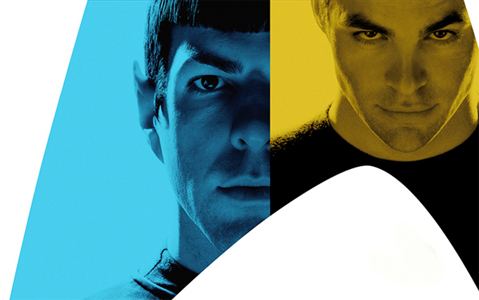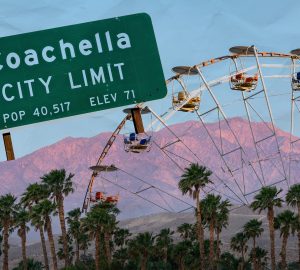Across the Universe: A Non-Trekkie’s Take on J.J. Abrams’ Star Trek
 I didn’t go in for “Star Trek.” The only knowledge of the series I had beyond the popular characters and actors, was gained from the crosstalk I overhead in a room full of science-fiction nerds for four hours each week.
I didn’t go in for “Star Trek.” The only knowledge of the series I had beyond the popular characters and actors, was gained from the crosstalk I overhead in a room full of science-fiction nerds for four hours each week.
That said, I had faith in director J.J. Abrams’ ability to make me care about this universe in which I had little interest. After all, he had accomplished this previously with “Mission Impossible,” monster movies (“Cloverfield”) and genre television (“Lost,” “Fringe”). So I had no reason to doubt that I would “boldly” go into the theater and be intrigued. A little over two hours later, I would be proved right.
From the opening space skirmish, I knew I was in for a summer blockbuster treat. Giant ships battle and chaos ensues while the seeds of Captain Kirk’s life story are sewn. It is a special effects marvel, although the decision to toss a bunch of “Trek” terminology at the viewer makes it a bit confusing. No fun space battles can make up for the head-scratching as one grasps what’s going on. This five-minute opening is the weakest point of the movie, and that speaks highly to the rest of the film’s quality.
What follows the title is our dynamic duo of Spock and James Kirk as they converge and board the starship Enterprise with he rest of the major characters, including Sulu, Uhara, and Chekov.
Once the whole gang is together, the real meat of the movie begins, complete with explosions, black holes, dogfights and other big-budget embellishments. Writers toss Sci-fi fans numerous inside jokes and Easter eggs throughout the film, from Firefly references to the blink-and-you’ll-miss-it Tribble cameo. Most of these I didn’t catch on my own the first time, but they all add to the fun and help establish the mood of the film.
Far from the bleak space operas and apocalyptic scenarios of most science fiction, “Star Trek” is personable, focusing on the characters and their hopes for survival. Even among the destruction and laser-aided combat, the movie is hopeful and optimistic for its characters’ futures. This is enhanced by the heavy doses of humor in the dialogue, which gives the film wider appeal.
The major twist of the movie, alternate timelines and red-matter-assisted time travel, is an entertaining way to introduce newcomers to the “Trek” world, while still managing to please fans who worried a prequel could destroy their precious canon. The film ties up any inconsistencies and provides a cool way for Leonard Nimoy to come out of retirement.
If Abrams’ goal was to press the big reset button on the franchise in the 21st century and restore “Star Trek” to its nerdy glory, he met his mark. Abrams’ crafted an exhilarating introduction that passes by at warp speed and proves quite entertaining. He leaves viewers excited for the movie to continue toward any possible sequels.
Even with all the movie invests to get moviegoers into the world of “Trek,” I still won’t watch the original show. Nope. No William Shatner for me, but at “Star Trek 2” from Abrams? Beam me up.



























